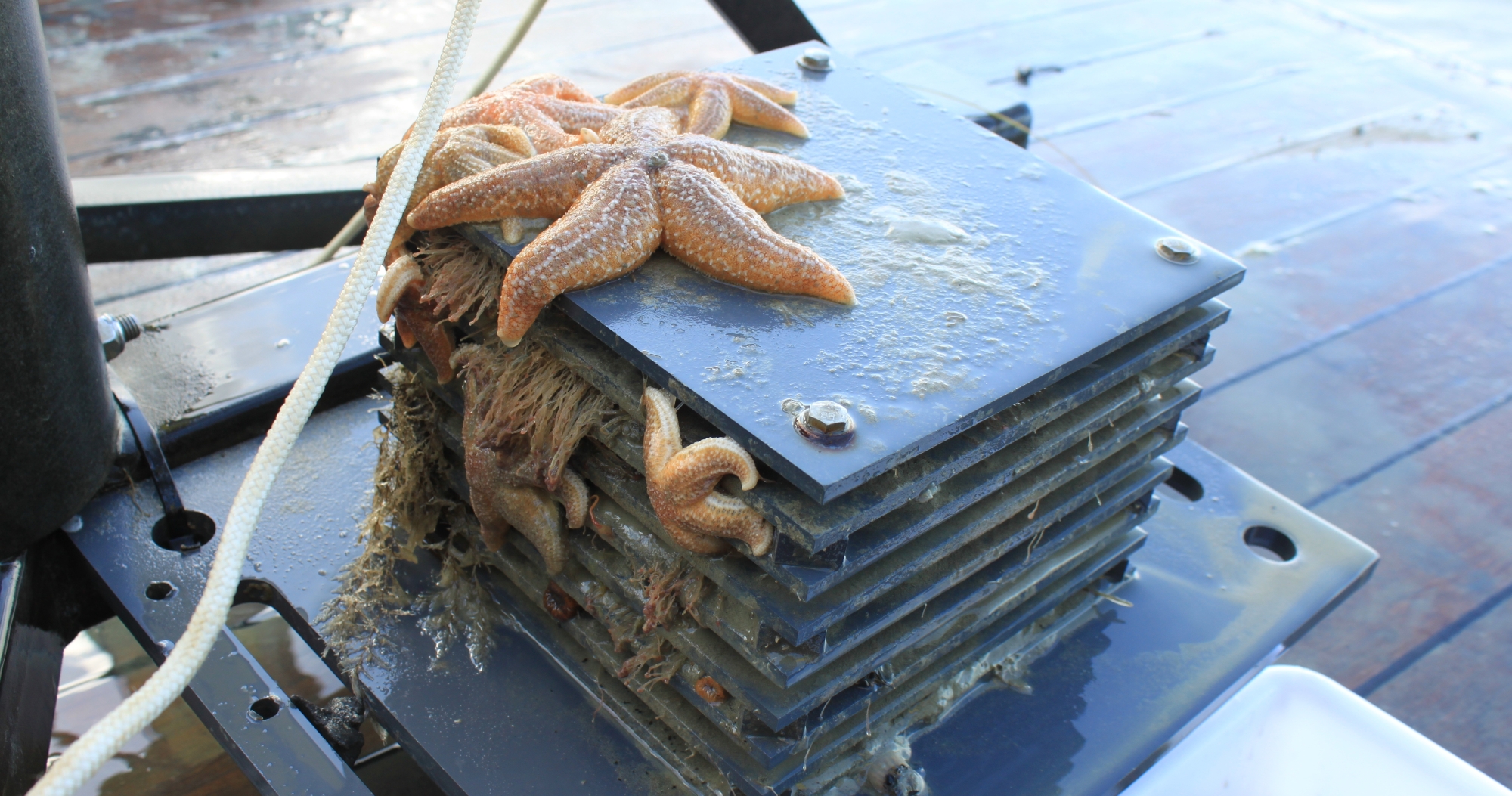17 / 12 / 2020

In the Belgian marine waters several ARMS artificial reefs are installed; near the port of Zeebrugge and the offshore wind farms. Photo: VLIZ
Part of a global initiative led by the Smithsonian Institution, the ARMS network of identical artificial reefs has been established close to marine sanctuaries and industrial locations (e.g. ports, offshore windparks) across Europe and polar regions. The aim is to closely monitor changes in hard substrate habitats on a continental scale and to provide data about the impact of non-native species, climate change and human activities in these environments.
ARMS units are stacks of plates that mimic the complex structure of the sea bed. Acting as “hotels” for marine species, they are colonised soon after being deployed. After a few months or years, they are collected, and replaced. Skilled taxonomists from the European Marine Biological Resource Center (EMBRC) offered their expertise to identify and analyze the encrusting species (e.g. coral and algae) and motile organisms (e.g. crustaceans and mollusks) that have made the structure their home with visual inspection, image analysis and genetic identification methods.
“On a single structure in Crete, we were able to identify the presence of fifteen non-indigenous species. We knew that the region was under extreme pressure from maritime traffic from the Red Sea, but were really surprised to see that the number was this high. Genetic monitoring allows alien species to be identified much earlier than by any conventional sampling method”, says Matthias Obst, Associate Professor at the University of Gothenburg and lead author of the recent publication in Frontiers in Marine Science which outlines the initial findings of the network.
Jonas Mortelmans, VLIZ researcher and co-author of the article: “In 2018, 2019 and 2020, we installed ARMS reefs in the Belgian part of the North Sea, some near the offshore wind farms and some just outside the port of Zeebrugge. We collect the organisms at regular intervals for further identification and DNA barcoding. ” His colleague and co-author Katrina Exter, on the other hand, is involved as data manager: “The VLIZ data center participates in the data management of the project, with the great aim of making the data part of the European FAIR data landscape. For example, we create data formats and data access tools with which any researcher or policy maker, anywhere in the world, can easily find, understand and use the data. The main challenge here was to ensure that the genomics data can be requested and analyzed quickly and smoothly. Over time, we expect these will become even more important for decision-making in the management of our ports, fisheries and ocean health in general.”
The European ARMS initiative is supported by ASSEMBLE Plus, the European Marine Biological Resource Centre (EMBRC) and the Interreg project GEANS. For Flanders, this work was made possible in the context of the genetic component of the LifeWatch Belgium biodiversity observatory.